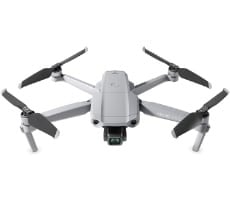Huawei Mate 9 Review: A Well-Appointed Android Device, At A Bargain Price
Smartphones are increasingly becoming the way most people access the Web. As such, a smartphone needs to have a responsive web browser to render complex pages quickly as well as a reliable cell or Wi-Fi connection. We can’t easily, quantitatively state how well these radios perform in the phones as the variables between carriers and access points are too difficult to lock down, but we can investigate browser performance between devices.
For our first
Here, we see the Mate 9’s processor shine, trailing only behind the Samsung Galaxy S8+. We witnessed this play out in everyday use, where we noticed very little lag between bringing up the Chrome browser and landing at a loaded page.
AnTuTu’s latest benchmark returns a number of metrics ranked with nebulous scores, rather than frame rates or time to complete. We tested with the latest version of AnTuTu across all platforms including Android, iOS and even Windows Phone. AnTuTu returns four top level performance metric results that we are including here: CPU, RAM, 3D, UX (or User Experience), along with a total score.

The Mate 9 didn’t perform as admirably as we’d expected here. We reran the test after initially compiling this data and pulled a 145170, but that’s only an incremental gain. This is an interesting discrepancy somewhat at odds with our other results.
In the GeekBench test, we're stressing only CPU cores in a handset (not graphics), with both single and multi-threaded workloads.

In this test, the Mate 9 once again presses to the front of the pack, performing better than the S8 and S8+ this time around, taking second place only to the Moto Z2 Force. GeekBench definitely showcases the advantages of that Kirin 960 chip.
Futuremark's PCMark for Android is a newer benchmark addition here for us, so we have fewer results in our database of tested phones to show you. However, this is an excellent suite of tests that we highly recommend for benchmarking performance of a handset with heavier-duty tasks for things like image and video editing, as well as lighter-duty workloads like email, and web browsing. When you see the test running live it's clear its scripted application tests are carefully selected and tuned to make use of the platforms involved in a very controlled way.

The Mate 9 under PCMark can’t quite hold the pace of Samsung’s S8 generation, but it lands handily behind them on the overall Work 2.0 score. Again, the Mate 9 may not be the fastest phone anymore, but it definitely positions well on bang for the buck, including on the sorts of everyday demanding work that PCMark encompasses.
Next up, we're testing the Huawei Mate 9 with GFXBench, which has been one of our standard mobile graphics performance benchmarks for quite a while now. In order to ensure v-sync and resolution are not limiting factors, we are comparing Offscreen test results here. GFXBench tests OpenGL ES graphics workloads and we're specifically testing GLES 2.0 and 3.0 rendering performance in the following two benchmark modules.

Here we see the Mate 9 start to fall behind a bit on graphics processing. Obviously, this is purely synthetic, and, as one of the first phones approved for Google’s VR platform, Daydream, we’re confident that the Mate 9 can hold its own, at least at full HD resolution. We won’t speculate here on what a 1080p VR experience might feel like without trying it, however.
We also ran with Futuremark's 3DMark benchmark, which has been a staple 3D graphics benchmark at HotHardware across all mobile and desktop platforms for many years. In this

The Mate 9 lands with a fairly average performance this time around, while the Galaxy S8 and Moto Z2 Force continuing to take the top spots. While the Kirin 960 performs admirably, the Snapdragon 835 still has it beat. This is one area where that near-year on the market may make itself more obvious.
3DMark Sling Shot is a new benchmark module that's been added to the 3DMark mobile suite, so again we have fewer results in our database to share, though we do have a few top-shelf Android phones, the iPhone 7 and Samsung's previous-gen Galaxy S7 in the mix. Sling Shot is a much more advanced OpenGL ES 3.1 and Metal API-based test that employs some advanced rendering techniques like volumetric lighting and particle illumination. In this test, we again run the Offscreen mode, so as to remove display resolution differences from the equation and thus can compare cross-platform results more reliably.

No surprise here. The Snapdragon 835 continues to dominate in OpenGL and physics processing. The Mate 9 slips even further in the ranks...although let’s be fair. How long ago was it that we were singing the praises of the Galaxy S7 Edge? (Spoiler: March 2016) And the Mate 9 beats that.






